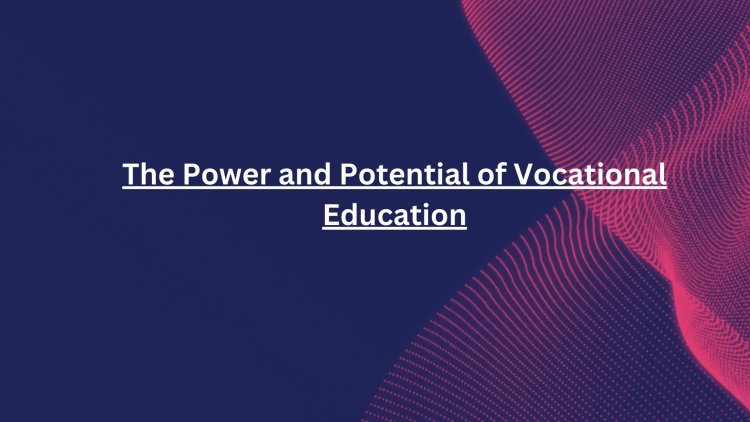The Power and Potential of Vocational Education
Share this Post to earn Money ( Upto ₹100 per 1000 Views )

In an ever-evolving global economy, the need for a skilled workforce has never been greater. Traditional education systems, while essential, often fall short in providing the practical skills and training required for many industries. This gap is where vocational education steps in, offering a pathway to immediate employment and long-term career success. This blog delves into the significance, benefits, and future of vocational education.
Understanding Vocational Education
Vocational education, also known as career and technical education (CTE), focuses on equipping students with specific skills and knowledge related to particular trades, occupations, or professions. Unlike traditional academic education, vocational education is hands-on and practical, preparing students directly for the workforce.
Key Features of Vocational Education
1. Industry-Relevant Curriculum
- Practical Training: Courses are designed to provide practical, hands-on training in various trades such as healthcare, engineering, IT, culinary arts, and more.
- Skill Development: Emphasis on developing technical skills that are directly applicable in the job market.
2. Work-Based Learning
- Apprenticeships: Many vocational programs include apprenticeships, allowing students to gain real-world experience while learning.
- Internships: Opportunities to work in actual business environments to apply learned skills.
3. Flexible Learning Paths
- Modular Courses: Many vocational programs offer modular courses that can be taken individually or combined for certification.
- Continuous Education: Options for continuous professional development and upskilling.
Benefits of Vocational Education
1. Job Readiness
- Immediate Employment: Students are prepared for immediate employment upon completion of their courses.
- High Demand Skills: Training in skills that are in high demand by employers, increasing job prospects.
2. Economic Advantages
- Cost-Effective: Vocational education is often more affordable than traditional four-year college degrees.
- Higher Earning Potential: Graduates with vocational training often enter the workforce sooner and can achieve competitive salaries.
3. Personal Development
- Confidence Building: Hands-on training helps build confidence in students as they see tangible results from their work.
- Career Satisfaction: Provides a clear career path and opportunities for advancement, leading to higher job satisfaction.
Vocational Education in Action
1. Healthcare Sector
- Nursing and Medical Technicians: Programs that train students to become certified nursing assistants, medical technicians, or other healthcare professionals.
- Practical Training: Includes clinical rotations and internships in healthcare facilities.
2. Information Technology
- Coding Bootcamps: Intensive training programs in programming, web development, and software engineering.
- Certifications: Industry-recognized certifications such as CompTIA, Cisco, and Microsoft.
3. Trades and Crafts
- Construction and Manufacturing: Training in trades such as carpentry, plumbing, electrical work, and welding.
- Apprenticeships: Often include apprenticeships that provide on-the-job training.
The Future of Vocational Education
As the demand for skilled workers continues to grow, the future of vocational education looks promising. Advances in technology and changes in the job market are driving the need for more specialized training programs. Here are some trends and predictions for the future of vocational education:
1. Integration with Technology
- E-Learning Platforms: Increasing use of online platforms for vocational training, making education more accessible.
- Simulation and Virtual Reality: Use of VR and simulation technologies for practical training in a controlled environment.
2. Collaboration with Industries
- Industry Partnerships: Collaboration between educational institutions and industries to ensure curricula are aligned with current job market needs.
- Customized Training Programs: Development of customized training programs tailored to the needs of specific employers.
3. Focus on Lifelong Learning
- Continuous Upskilling: Encouraging lifelong learning and continuous upskilling to keep pace with technological advancements and changing job requirements.
- Micro-Credentials: Offering micro-credentials and certifications for specific skills that can be earned quickly and stack towards larger qualifications.
Conclusion
Vocational education plays a crucial role in preparing individuals for the workforce by providing them with the practical skills and knowledge needed in various industries. As we move towards a more skill-oriented job market, the importance of vocational training cannot be overstated. By bridging the gap between education and employment, vocational education not only enhances individual career prospects but also contributes to the economic growth and development of societies.

 deanjennyjohn
deanjennyjohn 





